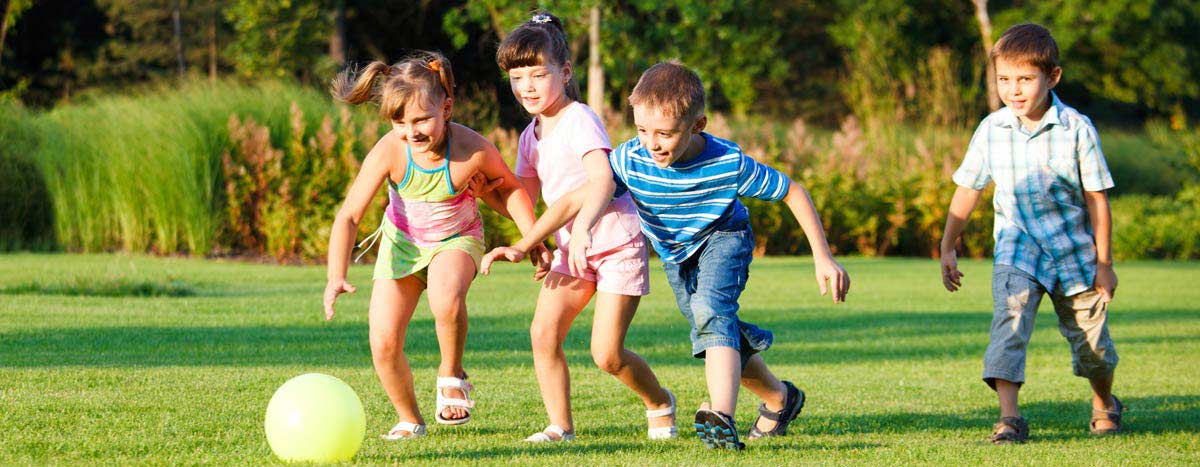Dyspraxia in Children: How to Help Clumsy Kids

In our occupational therapy (OT) sessions at the Sunny Days Sunshine Center, we sing a song called “Let Your Eyes Tell Your Body What to Do.” We use this song to gently remind children to look around, take note of the area, and then move. We are trying to replace “on-the-go” actions with conscious spatial awareness for children with dyspraxia.
What is Dyspraxia?
Dyspraxia, also known as Developmental Coordination Disorder (DCD) or motor learning difficulty, is a developmental neurological and coordination disorder which causes movement difficulty related to memory, coordination, processing, and judgment. It makes motor tasks difficult and can also cause immune system and nervous system issues.
Can Children Have Dyspraxia?
Yes, kids can have dyspraxia, as it is a developmental disorder.
What are the Symptoms of Dyspraxia/DCD?
There is a wide range of dyspraxia symptoms, and these can vary with age.
For example, a child between age zero and three may have trouble eating and sleeping, noise sensitivities, and delayed motor skill development.
A child between ages three and five may spill drinks frequently, not have a sense of danger, and be easily excited. Children may display movements demonstrating their excitement (toe tapping, hand clapping, etc.).
Children six and over with dyspraxia may have poor handwriting, poor spatial awareness, sensory issues, and a short attention span.
These are simply some examples, as dyspraxia encompasses a wide range of symptoms.
Why Dyspraxia Occurs
Dyspraxia occurs when the vestibular system or visual system is not working efficiently.
The visual system, the proprioceptive system, and the vestibular system need each other to help our children move easily and efficiently. If any of the systems are not working well, it’s our job to provide our kids with fun gross motor experiences that help build body awareness, help the body move efficiently, help children to use their eyes to be aware of the environment, and to coordinate these three systems for interactions in the community. The end result is for the child to be able to move and respond to challenges in a way that leads them to wanting to engage more, play safely, and ultimately gain a sense of joy and accomplishment.
Understanding Children with Dyspraxia
The process of reminding your eyes to look around before moving is exhausting. We usually do this automatically, but if our kids forget to look around, we have to lovingly remind them. Our children would much rather run around and crash into walls, floors, tables, or people than stop to look around and make postural adjustments safely around an obstacle.
Crashing into things uses the proprioceptive system in place of the visual system. For someone with weak eye muscles, it is easier to collide with something than use his or her eyes to identify their surroundings.
The proprioceptive system is made up of muscles and joints. The muscles move the joints, and together they move the body from one point to another. We can move quickly, slowly, make sudden stops, scale couches, and jump off of curbs.
We use our eyes to decide how much force we need to generate to jump over a toy, and we use the information from our eyes to walk around obstacles that are in our way. Sometimes our kids bump into things because their muscles and joints are not working well together, which interferes with fluid movement. Our children aren't sure how to get their bodies to work right, so we help them by making exercise fun.
How to Help a Clumsy Child
- Create an obstacle course!
Make an obstacle course in the house and have your child complete the course over and over, prompting him or her to make a number of different movement decisions. You can change the challenges of the obstacle course often so they have to discover new ways to move their muscles and joints. Place a crash pad of pillows at the end to make it fun and silly.
An obstacle course will help children train their visual scanning system to look around to see what they need to do next, and the course will train the muscles and joints to navigate around obstacles. If they lose their balance on any part of the course, the vestibular system detects this change in position and immediately sends information to the muscles and joints so the body stays upright. The vestibular system knows when the body is off balance and the muscles and joints help the body regain balance.
- Sing "Let Your Eyes Tell Your Body What to Do" with your child.
By singing this song together, you can help instill in your child that it is important to look before she leaps!
- Go to the playground.
Help your children's vestibular system by taking them to the playground and making sure that they spin, and swing side to side and front to back. Have them roll over on the ground, do a somersault, lean back on a ball, or walk on a balance beam/curb. Or, play tug-of-war or challenge your child to a relay race!
- Have an adventure.
Additional outdoor activities to encourage coordination practice include: hiking, swimming, rock climbing, bouncing on a trampoline, and wheelbarrow walking. Have fun!
Empower your children to be the boss of their bodies, praise them for looking around, and challenge them to a relay race where they have a visual target and have to speed up and slow down at different points. Reach out to us at Sunny Days Sunshine Center if you have questions about dyspraxia or need therapy services for your child.
Further reading:
How to Help Children Cope with Sensory Sensitivity
Gail Spina
